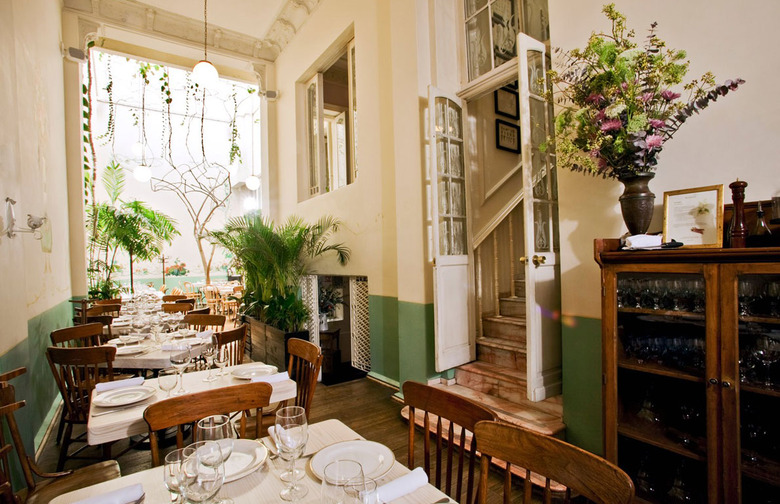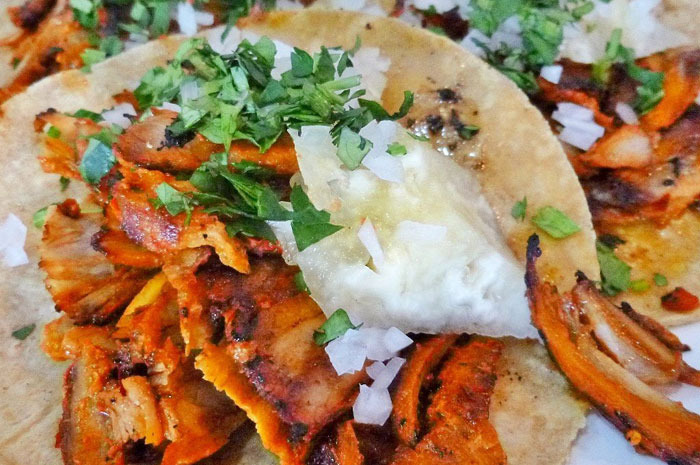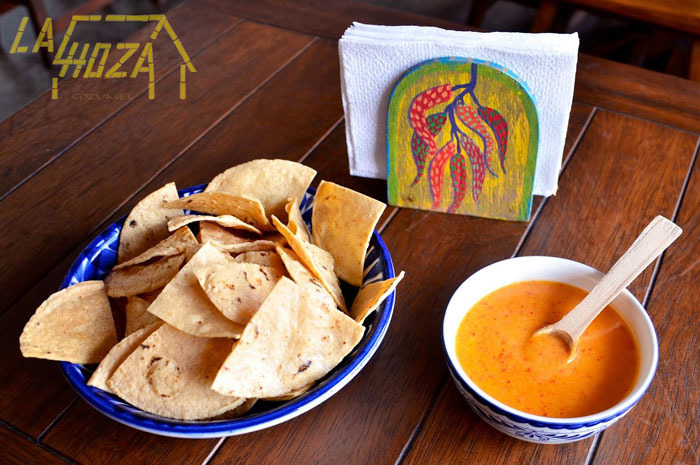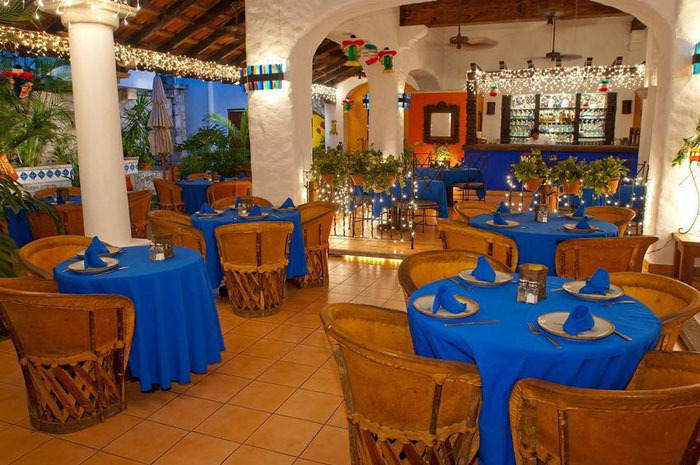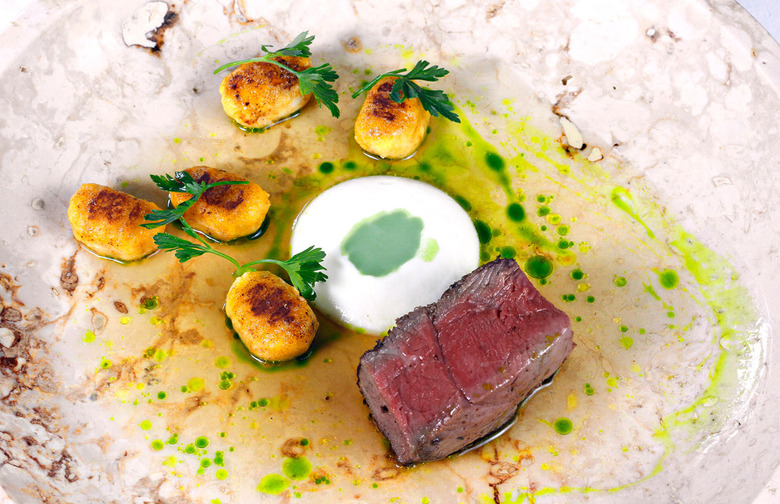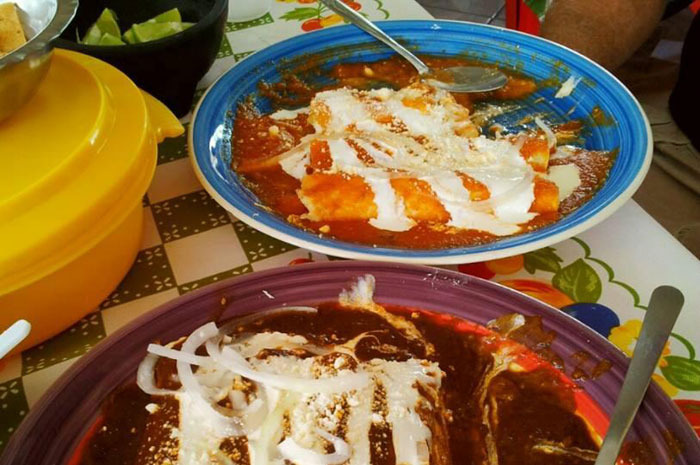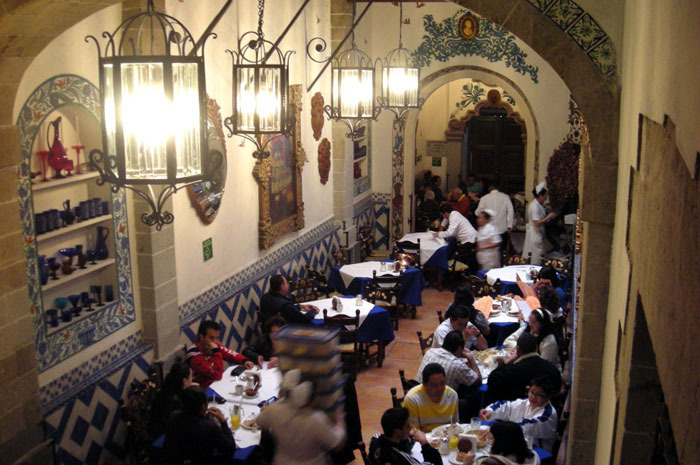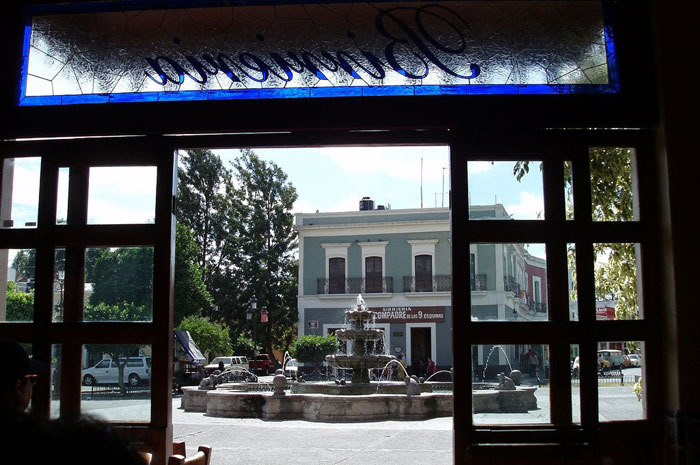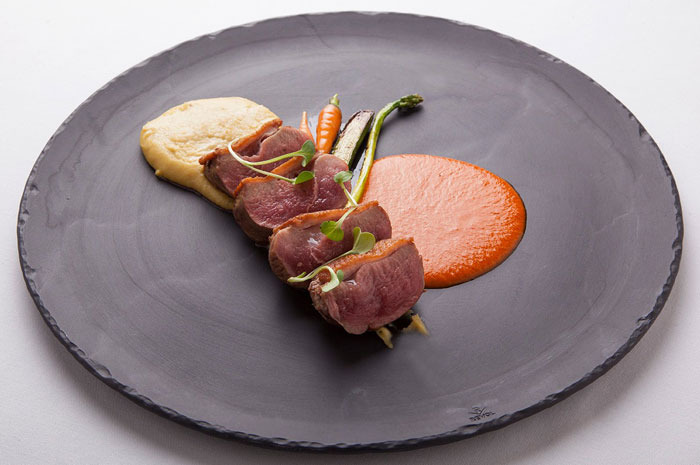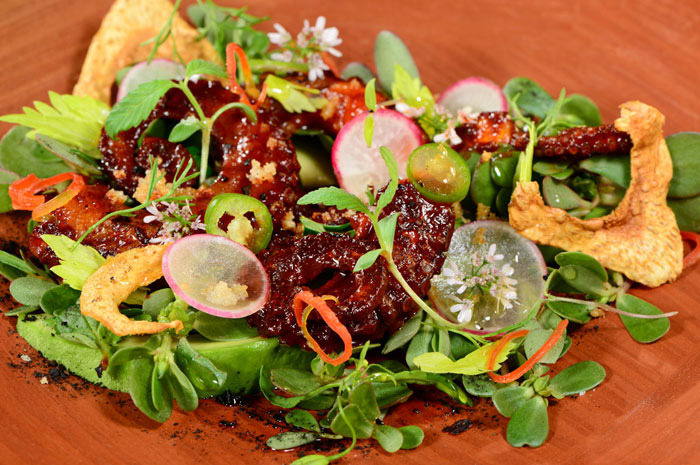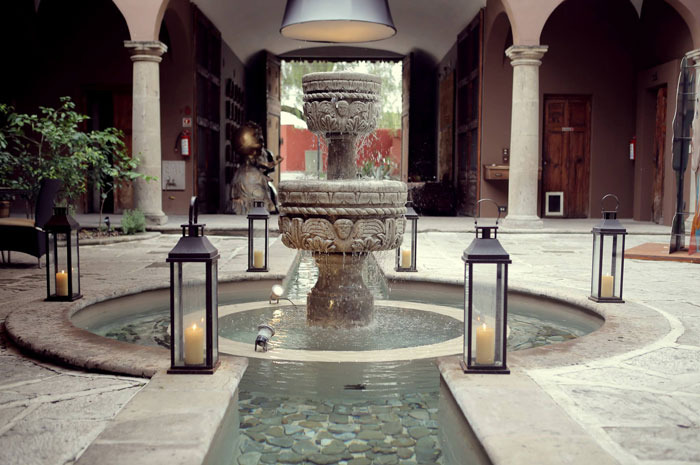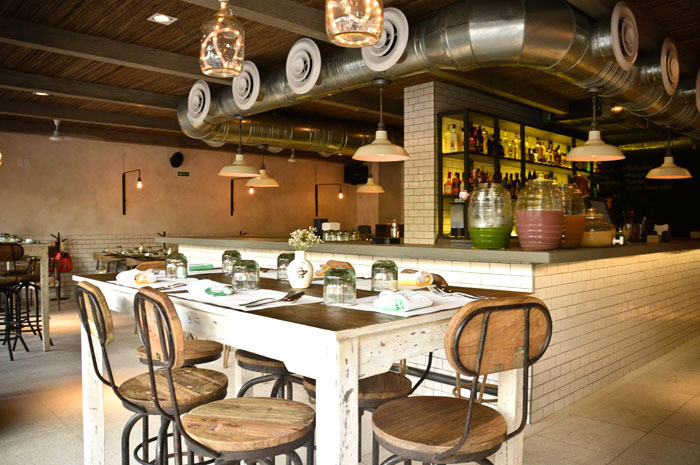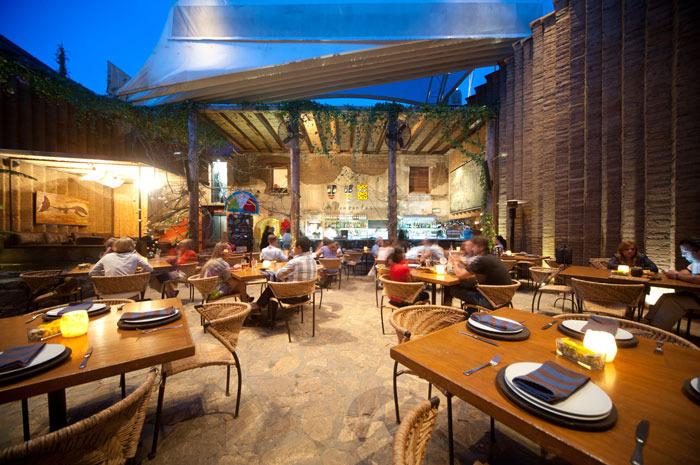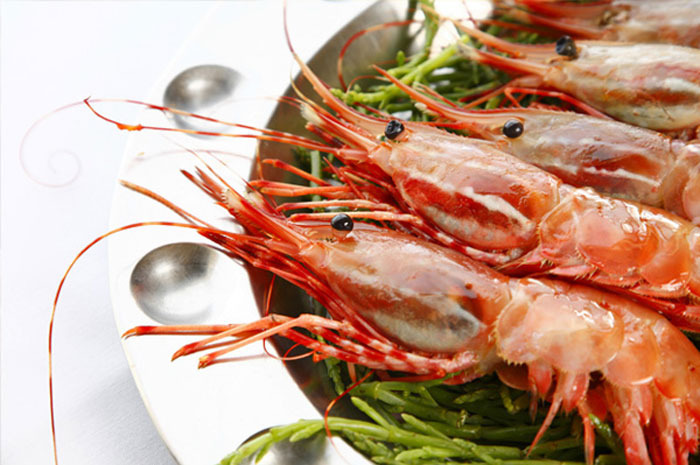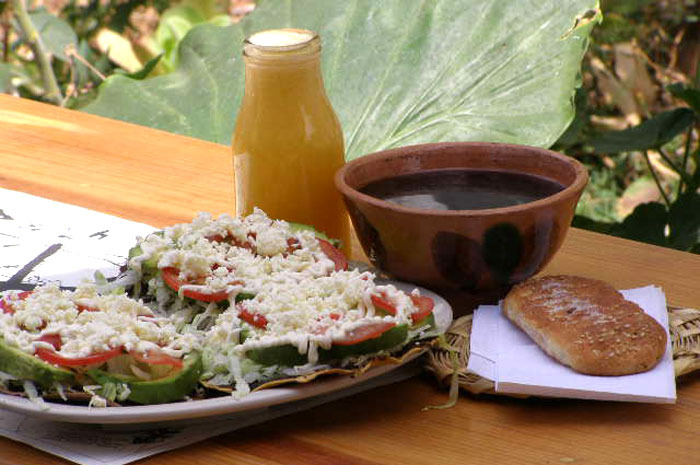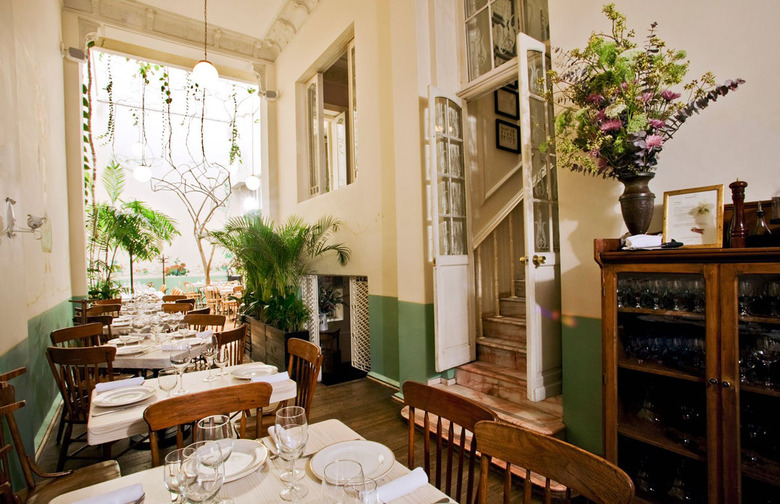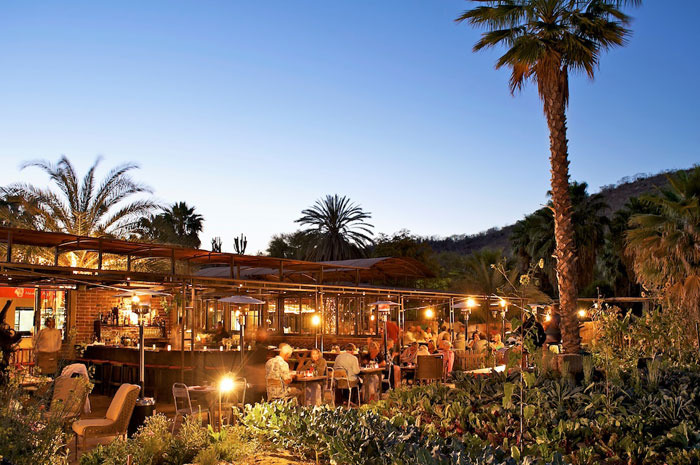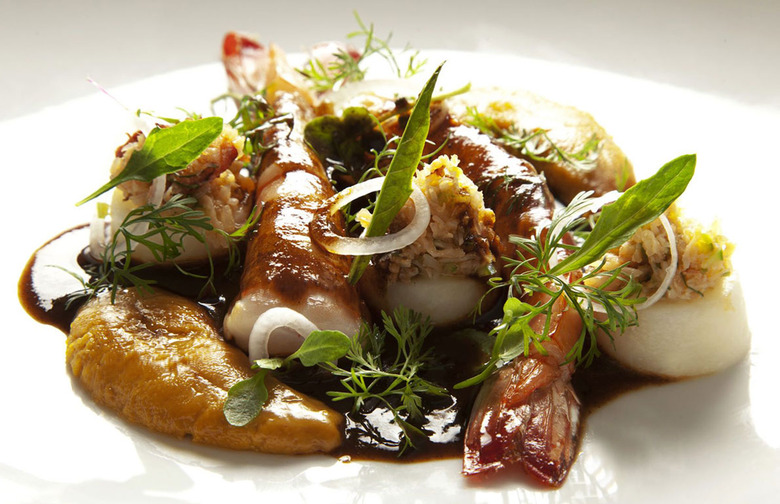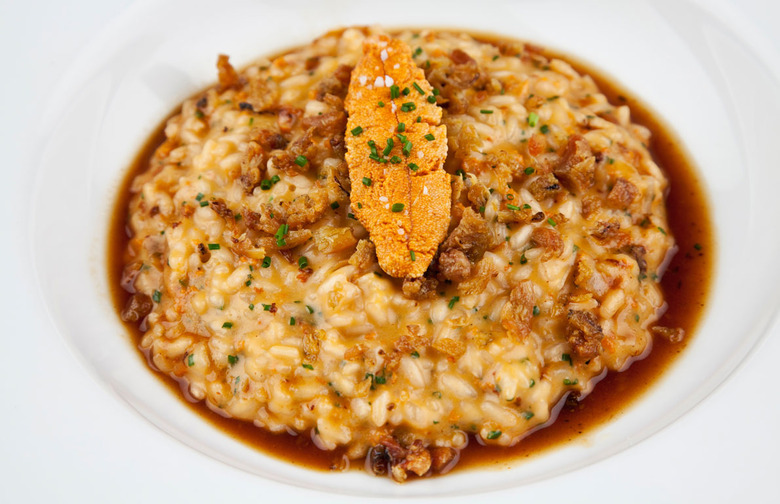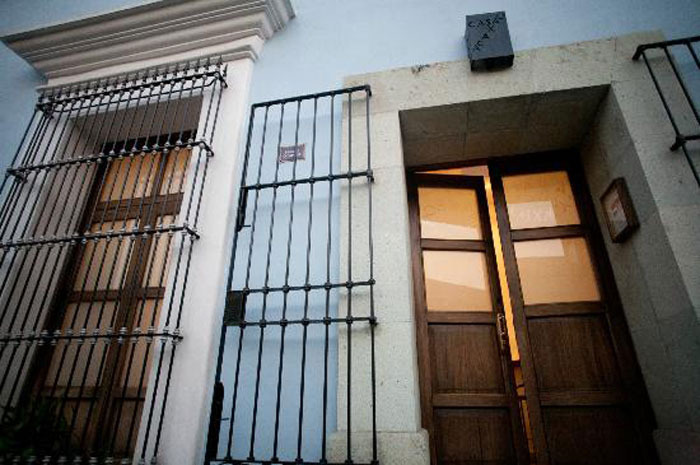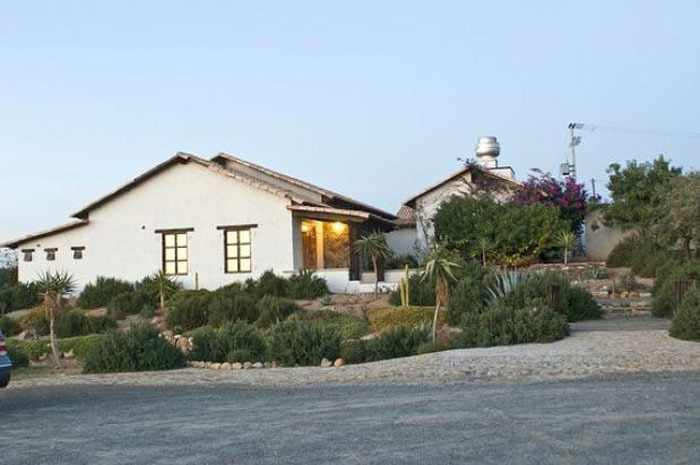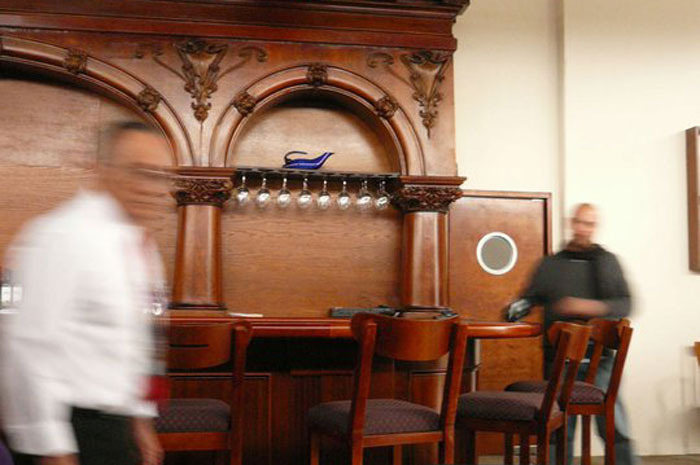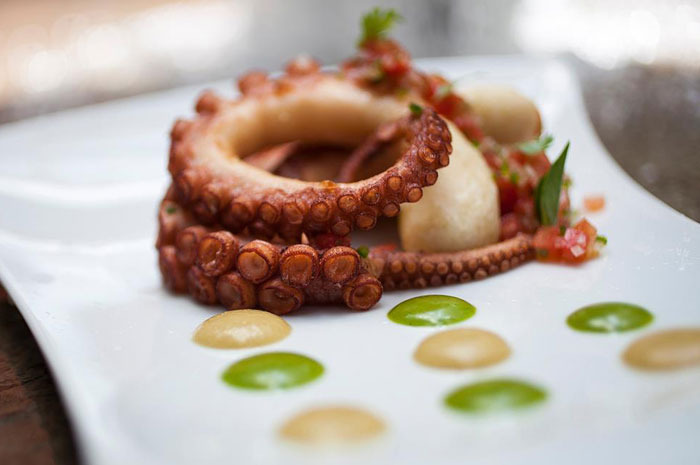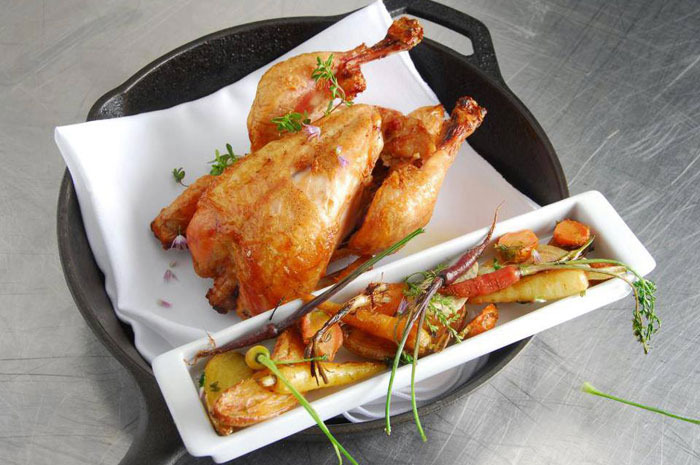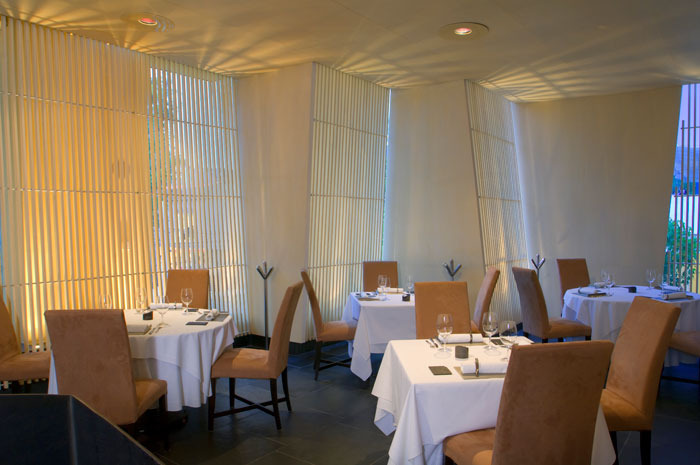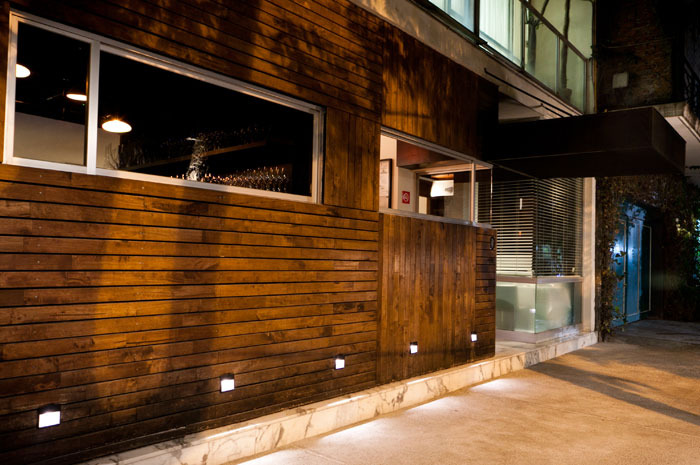25 Best Restaurants In Mexico
From street food carts to some of the world's best eateries, Mexico is an exciting and delicious culinary destination.
#25 Taquería Los Parados (Mexico City)
This favorite Mexico City taquería is on the list of author Patricia Schultz's 1,000 Places to See Before You Die, so maybe that's reason enough to pay a visit. Rick Bayless, America's most esteemed non-Mexican expert on Mexico's cuisine, chose the place to demonstrate three essential Mexican salsas on his Mexico — One Plate at a Time series, too. The menu at this casual, standing-room-only place is heavy on tacos, obviously — featured are tacos de arrachera (skirt steak), bistec con queso (steak and cheese), and chile poblano con queso (chiles and cheese), among others — but the chicharrón de queso, a thin piece of pan-fried cheese, is also a favorite.
#24 La Choza (Cozumel)
For an authentic meal in Cozumel, locals and tourists alike will direct you to La Choza. Inside the squat, yellow building with its red-tiled roof, the restaurant is big, lively, and bright, filled with archways, small wooden tables, lanterns and plants hanging from the ceilings, and colorful Mexican artwork adorning the walls. La Choza is known for its mole poblano, but equally good are its guacamole, chicken and beef fajitas, quesadillas, ceviche, pork in tomato sauce, and grilled seafood dishes (especially the fish of the day).
#23 Pancho’s Backyard (Cozumel)
Chances are you'll never find a quiet moment at Pancho's, as it is constantly bustling with hungry locals ready to tuck into a delicious meal. This is open-air restaurant is as authentic as they come — it even occupies one of the oldest buildings in Cozumel. Diners love Pancho's beautiful courtyard setting, tile floors, and stone walls, not to mention the lush trees that surround the restaurant. For starters, you'll enjoy Pancho's guacamole with tortilla chips or crema de cilantro, a light aromatic cilantro soup with croutons. Mains include mahi mahi topped with an almond, mango, orange, and pineapple pico de gallo; lobster tail with garlic butter; beef, chicken, or vegetarian fajitas; chicken enchiladas with mole sauce and rice; and green poblano peppers stuffed with plantains and walnuts.
#22 Néctar (Mérida, Mexico)
Chef Roberto Solís' haute cuisine at Néctar is as ambitious as that produced in the big-name kitchens he trained in, like those of Noma, Per Se, and The Fat Duck. Located in the Yucatán, Néctar has a simple philosophy: stay true to the original flavors and roots of the cuisine while presenting dishes in a new, evolved manner. Using the techniques of the modernist kitchen, the menu includes dishes such as tamal with pumpkin seed foam and roasted cherry tomatoes; twice-fried pork belly with roasted guava and Edam cream cheese; suckling pig in a red sauce with onions, beans, and oregano; and crispy-skin chicken with lime salsa and marmalade of habanero chiles with chochoyotes (corn masa dumplings).
#21 Las Palmas (Cozumel)
Las Palmas serves delicious Mexican meals without the frills, with plastic tables and chairs and incredibly low prices. Dishes come in generous portions, so come hungry. Chips and salsa, refried beans, and guacamole often show up on the table while guests peruse the menu. Go for the chicharrones (fried pork rinds) and poc-chuc (a Maya-style grilled pork dish), though diners also rave about the fajitas, enchiladas, grilled fish, and pollo a la plancha con queso (grilled chicken breast topped with melted cheese).
#20 Café de Tacuba (Mexico City)
This historic Mexico City institution, founded in 1912, is big, bright, and bustling, and the menu is a collection of Mexican specialties with other homey specialties added. Standouts include mole poblano enchiladas, chicken tacos with guacamole, chuchulocos (taquitos) in hot sauce, barbecued pork steak, fried calf's brains, beef filet with chilaquiles (cut-up tortillas in a chile-based sauce), and assorted house-made Mexican pastries. A mural on the wall in the main dining room depicts the supposed invention of mole poblano by nuns in a convent in Pueblo.
#19 Birriería Las 9 Esquinas (Guadalajara)
If there is one place to try birria, a spicy Mexican goat stew that originated here in the state of Jalisco, it's at Birriería Las 9 Esquinas. This Guadalajara eatery can be found tucked in the charming working class neighborhood of Las Nueve Esquinas (The Nine Corners, named for the area's numerous intersecting streets). Guests are greeted by proprietor Don Federico, who seats diners in the blue-and-yellow-tiled, colonial-style dining room while Doña Lupita prepares the restaurant's namesake dish. As guests wait for their birria, they can munch on the complimentary cebollitas (grilled green onions) and tortilla chips. Here, the birria consists of goat with mirasol, ancho, and pasilla chiles cooked overnight over a low fire and served with a consommé (a clear broth). Insider tip: one of the best ways to eat birria is to first scoop up the meat up with a tortilla chip, dip it into the broth, take a bite, and repeat.
#18 Amaranta (Toluca de Lerdo, Mexico)
About an hour outside of Mexico City, chef Pablo Salas is implementing forward-thinking techniques and practices at his raved-about Amaranta. Salas uses modern cooking styles to enhance local produce and deliver dishes with big, bold flavors, one of the many reasons his restaurant landed a spot on this year's Latin America's 50 Best Restaurants list. For appetizers, go for the pig's trotters carpaccio au vinegar — fine slices of boneless pig's feet with vinegar, olive oil, and oregano, cabbage salad, chayote, carrots, and serrano chiles. Mains include oxtail in a manzano pepper mole served with a salt-cured nopal (cactus) salad and cilantro sprouts; roasted veal breast braised for six hours and served with refried beans, pico de gallo, and guacamole-tomatillo sauce; chicken with mole served with glazed sesame and vegetables; and ribeye served with smoked mashed potatoes, organic white beets, and truffle oil. Salas' brother, Francisco, is the sommelier here and creates unique food and drink pairings, making sure not to neglect local beers and spirits.
#17 Pangea (Monterrey, Mexico)
Guillermo González Beristáin opened Pangea in 1998, and since then has set the standard for Mexican haute cuisine, influencing chefs and other restaurants to follow in his footsteps of presenting local Mexican produce in new, inventive ways. Beristáin has opened several other restaurants in northeastern Mexico, but Pangea remains his flagship, serving diners Mexican cuisine prepared with modern French techniques. Notable dishes include goat (Monterrey's specialty) cooked in beer; steak tartare; foie gras with tuna, watermelon, and truffle oil; angel hair pasta served with shrimp, grilled vegetables, and chiles; and loin of dorado with pork stew, served with a purée of smoky corn and tomato marmalade. Pangea is also home to a highly regarded wine cellar, as Beristáin is a strong supporter of Mexican wines.
#16 neXtia (San Miguel de Allende, Mexico)
Bricio Domínguez proved himself as one of the most original chefs in Mexico at his El Jardín de los Milagros in the central Mexican capital of Guanajuato. That establishment is still going strong, but now Dominguez has expanded his reach into the pretty tourist town of San Miguel de Allende with a casual, more-or-less traditional place called 13 Cielos and this restaurant, in the boutique Nena Hotel, featuring his "cocina del autor," or creative cuisine. That translates to such things as cream of black bean soup with charred tortilla foam and guindilla chile oil, wild salmon with cilantro pesto and baby beets, and grilled sirloin with Cambray potato foam and caramelized onions — or, for the truly adventurous, sopes (like thick tortillas) of charred yellow corn with escamoles (ant larvae), avocado sauce, and moth-larvae salt.
#15 Maíz de Mar (Playa del Carmen, Mexico)
Enrique Olvera, the celebrated Mexican chef whose Pujol in Mexico City is our #1 restaurant this year, says that his outpost in the beach resort of Playa del Carmen is a different thing altogether. "It's very casual," he says. "People go in swimsuits. It's mostly a raw bar with lots of local seafood. We serve vuelva a la vida ["back to life," a bracing mixed seafood cocktail], traditional cebiche and cebiche a la veracruzano [with tomatoes, olives, and capers], all kinds of seafood." That includes things like fish with garlic–ginger sauce or with pineapple and guajillo chiles, octopus cocktail with sour orange, and shrimp and pork pozole (a hominy stew). The homemade tortillas are something special. "The Yucatán," says Olvera, "is known for its varieties of corn."
#14 Los Danzantes (Oaxaca, Mexico)
Named for the carvings of dancing figures on the ruins of nearby Monte Albán, the famed pre-Columbian archeological site, Los Danzantes ("The Dancers") delivers a supreme sampling of Oaxaca's famous moles and mezcal. Set in the courtyard of a renovated three-story colonial building, Los Danzantes is architecturally stunning. The restaurant features an 80-seat open-air dining room, adobe walls, and a shimmering pool. Guests can be seen dining on fondue de huitlacoche, a corn fungus and cheese fondue with serrano pepper served in a rustic bread bowl; seed-crusted seared tuna with sesame vinaigrette, garlic, and oil dressing duet and a salad; salmon cooked in a traditional Oaxacan black mole, served with plantain and coconut purée and pico de gallo; and ribeye in a salsa de chapulines (grasshopper sauce) with coffee potatoes.
#13 La Querencia (Tijuana, Mexico)
Miguel Ángel Guerrero Yaguës, the chef–proprietor of this Tijuana original, may have coined the term "BajaMed." He was certainly one of the earliest practitioners of this tantalizing hybrid cuisine. La Querencia has a hip, contemporary-industrial look: bare concrete floors, lacquered steel tables, and exposed ducts overhead. Subtle, low-tech touches abound, like mounted game trophies on the walls, a tropical fish tank at one end of the dining room, and a row of rusty old cooking implements hanging above the divider that separates the open stainless steel kitchen from the dining room. The focus here is on fresh Baja seafood — scallop carpaccio, grilled shrimp salad, Cajun salmon, a mixed seafood plate with red and white miso sauces, and hot chiles. Also available are dishes like fresh pasta with several sauces to choose from, like roasted tomato sauce or pesto, lamb chop in pesto sauce, and a range of tacos, tostadas, and burritos employing such uncommon fillings as smoked marlin, giant squid, manta ray, tuna fin stew, and abalone "chorizo" — all of it delicious.
#12 Itanoní (Oaxaca)
At Itanoní, they believe that corn is the foundation of Mexican cooking. Founded by Amado Ramírez Leyva, who is credited for encouraging the Slow Food movement in his country, this small and open-to-the-street casual spot was named Itanoní for the Mixtec word for corn blossom. Since its opening in 2001, Itanoní has been using "estate" tortillas, made from one variety of corn from a single region, to make all types of antojitos, including tamales, tacos, tostadas, and other traditional foods. Meals, which mostly cost $5 or less, are devoured by schoolchildren, businessmen, and tourists alike.
#11 Rosetta (Mexico City)
Since 2010, Rosetta, a mansion-turned-restaurant, has been on a slow but steady rise toward becoming one of Mexico City's most impressive eateries. Chef-owner Elena Reygadas has made seasonality, simplicity, freshness, and flavor the cornerstones of Rosetta. The food is Mexican with Italian and other Mediterranean influences. On the menu diners will find authentic homemade pastas and dishes including sea snails with nasturtium leaves; quail with assorted grains, alfalfa, and smoked milk; and a dessert of roasted figs, orange and hoja santa ice cream. Another exceptional dish from the menu is veal sweetbreads with yogurt, peppermint, moscatel plum, and za'atar. Rosetta also has an impressive in-house bakery that has developed a cult following. Rosetta sits at the #33 spot on the Latin America's 50 Best Restaurants list.
#10 Flora's Field Kitchen (San José del Cabo, Mexico)
Its location down a rutted, dirt road may make some tourists wary, but don't let the adventure of getting there deter you. Flora's Field Kitchen, located on Flora Farm, a 10-acre organic farm-plus-market in the foothills of the Sierra de la Laguna Mountains, offers an unforgettable farm-to-table dining experience in a beautiful setting. All ingredients used come from the farm, owned by Gloria and Patrick Greene; breads are made from a wood oven, and the free-range meat comes from their nearby 150-acre ranch. New chef Aaron Abramson, a veteran of Blue Hill at Stone Barns, offers diners everything from a sandwich of homemade sausage with pickled vegetables (at lunch) to burrata with tapenade to 12-inch pizzas from the wood oven to family-style fried chicken dinners with mashed potatoes, gravy, and biscuits. Diners rave about the fresh juices and the specialty cocktails, like the hibiscus martini or the pelo de perro, Flora Farm's twist on the Bloody Mary. Sometimes, farm walks are offered pre-meal, and often there is live music into the early evening. A suggestion to keep in your back pocket: Diners suggest taking a cooler along so you can buy some fresh produce and artisanal goods to bring back to your hotel with you.
#9 Quintonil (Mexico City)
Two years ago, former Pujol chef Jorge Vallejo opened Quintonil, a restaurant that fast became one of the country's most exciting eating places. (Quintonil claimed the #21 spot on this year's Latin America's 50 Best Restaurants list. Vallejo, whom the American godfather of Mexican cuisine, Rick Bayless, described as executing "a very fine, and in some cases really brilliant" style of cooking, kicks Mexican cuisine up a notch. He focuses on ingredients that are native to Mexico — sourcing from small-scale producers across the country — while spicing up dishes with more contemporary cooking techniques. The ambiance delivers a warm, cozy feel, with Vallejo's wife overseeing the floor and personally attending to guests. On the menu you'll find reinvented dishes like sardines in green sauce with fennel and purslane, octopus in its own ink with potatoes and sausage, and homemade mole with charred tortillas and basil sprouts, along with other dishes.
#8 MeroToro (Mexico City)
"Mero" is grouper; "toro" is bull. Put them together and you have a splendid "surf-and-turf"-themed restaurant opened four years ago by Gabriela Cámara and Pablo Bueno of the popular Contramar. The place may be located in Mexico City's posh Colonia Condesa, but the vibe is relaxed (bare tables and slat-backed chairs; open kitchen), and the inspiration comes from far to the northwest, from Baja California, and Cámara and Bueno have secured the services here of one of that region's most accomplished chefs, Jair Téllez of Laja (see #6) in the Valle de Guadalupe, Baja wine country. Téllez (pleasantly) surprises palates in the Mexican capital with fresh ceviches, risotto with bone marrow and red wine, birria (a spicy stew usually made with mutton or goat) of clams, and a delicately cooked grouper (of course) on a bed of puréed cauliflower. Tellez's signature dish, though, shows that he has both feet on the ground: pan-fried pork jowl with lentils and a poached egg. Plus, the excellent sourdough bread may be unique in Mexico.
#7 Casa Oaxaca (Oaxaca, Mexico)
Located in the colonial-style Casa Oaxaca Hotel in Oaxaca, Mexico, the restaurant of the same name offers hotel guests and outside diners alike a high-end experience of modern, Oaxaca-style cuisine infused with Mediterranean flavors. Behind the culinary creations is chef Alejandro Ruiz, who beautifully marries the flavor profiles and ingredients of the Mediterranean and Mexico; you'll find basil and rosemary are just as relevant in his kitchen as huitlacoche and grasshoppers. The restaurant is split between two locations: the dining area at the hotel, with a popular open terrace for diners to enjoy the views, and another freestanding restaurant a 10-minute walk away in the historic district of Oaxaca. Both locations feature the same innovative cuisine, and a majority of produce used is organic and local. Appetizers include seafood tostada served with avocado, tomato, cilantro, chile, mayonnaise, and toasted peanuts, or roasted duck tacos served with a green sauce. Signature mains include turkey served with black mole, rice, and fried bananas; rabbit with a yellow mole sauce; lamb chops with garlic and chile; and grilled octopus with rice and grilled vegetables.
#6 Laja (Ensenada, Mexico)
When he's not overseeing the cooking at MeroToro in Mexico City (see #8), Jair Téllez — whose background includes stints at Daniel in New York City, La Folie in San Francisco, and the Four Seasons in Mexico City — can be found at his original restaurant Laja in the Mexican wine country of Valle de Guadalupe. Téllez was a pioneer of Baja Mediterranean cuisine, and is fanatical about using the freshest and best organic ingredients grown around the place — Laja has its own orchard, farm, and vineyard — or in other parts of the valley. Téllez offers a four or eight course menu that changes by the week, as he cooks according to the best and most seasonal ingredients available. Menu particulars can be unpredictable, but his salads are anthologies of freshness, his soups are authoritative (a cream of eggplant with jamón serrano, for instance), his seafood is first-rate (marinated yellowtail with preserved lemon, say), his pastas are inventive (Swiss chard ravioli with ranch egg and beef juice), his meat dishes are full of flavor and perfectly cooked (oven-roasted local lamb with shallots and mustard greens is a standout dish), and his desserts, (white chocolate royal with mascarpone cheese). As Laja has its own vineyard, Téllez makes his own wines, and also serves a fine selection of the valley's best.
#5 Manzanilla (Ensenada, Mexico)
You've got to love a restaurant whose front window reads "Fine Wine, Live Abalone, Rare Mezcal." The hot pink chandeliers and massive wooden back bar (like something out of an upscale cantina from a century ago) that greet you when you enter are a good sign, too. Manzanilla is a place with personality. Husband-and-wife chefs Benito Molina and Solange Muris, pioneers of the so-called "Baja Med" movement, opened this Ensenada hotspot in 2000, tapping into the Baja California region's natural ingredients and resources. "[Baja California] has the best fish, the best alcohol, the best wine, so the combination is just perfect. It's every chef's dream to live in [here]," Molina said in a recent interview. The menu at Manzanilla is heavily seafood-focused, offering such delights as truly memorable fish with ginger, chile serrano, and soy sauce; oysters steamed with white wine or beer; grilled clams with gorgonzola; fish of the day with chickpea purée, chayote, and seaweed; and for the non-piscatorially inclined, ribeye served with Cambray potatoes; pork loin with vanilla-scented apples and polenta; and a few other meaty specialties.
#4 Moxi (San Miguel de Allende, Mexico)
Condé Nast Traveler anointed San Miguel de Allende, a pleasant and colorful artists' and American retirees' community in the state of Guanajuato, northwest of Mexico City, as the top city in the world a couple of years ago — leaving such burgs as Barcelona, Paris, and Sydney in the dust. Well, all right. But San Miguel is certainly an engaging and eye-catching place, and one of its great attractions — and a rare example of contemporary architecture in the city — is the Hotel Matilda, a comfortable and alluring hostelry graced by an excellent restaurant, Moxi. Moxi is under the direction of Enrique Olvera, of Mexico City's unparalleled Pujol (see #1) and the hot new Manhattan entry Cosme. Here, in a pleasant, art-enhanced dining room with a breezy terrace, Olvera's crew draws heavily on organically raised local produce to create Mexican-accented international cuisine: shrimp burgers with tartar sauce and guacamole; fish of the day with pineapple purée, serranos, and a cactus salad; pumpkin risotto topped with a poached egg; lump crab salad with avocado, Cambray potato chips, and guajillo and morita chile purée; confit leg of suckling pig with almond mole and tamarind purée; and many other vividly flavored delights. Moxi is not only one of the best restaurants in Latin America, but was also named to The Daily Meal's list of the 101 Best Hotel Restaurants in the World for 2014.
#3 Misión 19 (Tijuana, Mexico)
http://mision19.com/Javier Plascencia's family owns everything from pizzerias to the revivified dining room at Hotel Caesar's (whose original proprietor, Cesare Cardini, invented the Caesar salad), has been instrumental in helping to turn the infamous border town of Tijuana into an increasingly serious restaurant town. Looking out on the city from the second floor of a modern office building, Misión 19 — with wraparound windows, an open latticework of wood enclosing the bar, pastel neon accents, and cactuses that look like something out of a cartoon — is Plascencia's flagship, his most innovative and original restaurant. Among the dishes with which Misión 19 tempts diners are baby kale, avocado, and compressed cucumber salad with cured salmon trout and goat cheese dressing; risotto with heirloom beans, wild mushrooms, and huitlacoche; seared fresh local tuna with cactus, black mole caramel, and pickled shimeji mushrooms; and tablitas (crosscut beef ribs) vacuum-cooked for 48 hours and served with "cracklings" of beluga lentils, chayote, and Brussels sprouts.
#2 Biko (Mexico City)
The Mexican-Spanish fusion cuisine served at Biko is described by chefs Bruno Oteiza and Mikel Alonso as "sumptuous with surprises." Biko has established its place as one of Mexico City's top high-end restaurants, earning a place on the World's 100 Best list by San Pellegrino. The menu, which changes often, focuses on locally sourced seasonal ingredients, turned into refined, simple dishes that match the minimalist décor of Biko's dining room. The signature appetizer, "Foie 100% Algodón [Liver 100% Cotton]," is an elegant plate of whipped foie gras served with different complements depending on the season, including a version wrapped in iceberg lettuce, with cheese, and topped with cotton candy.
#1 Pujol (Mexico City)
After graduating from the Culinary Institute of America in Hyde Park, N.Y., and working for the superb Alsatian-born chef Jean Joho at Everest in Chicago, Enrique Olvera opened this contemporary-style restaurant in Mexico City in 2000 with the idea of using indigenous ingredients and traditional cooking methods to produce food with French-style refinement. He succeeds admirably with such dishes as bocol huasteco, a kind of plump tortilla with cheese from Chiapas; a mixed vegetable assortment in a mole of pumpkin seeds and broccoli; an "esquite" made not with the usual corn kernels but with wheatberries, flavored with epazote cream, serrano chiles, and queso oreado; and the remarkable "mother mole," cooked for hundreds of days and containing scores of ingredients, served as a pool of sauce with translucent sesame tortillas. The restaurant's list of mezcals is eye- and palate-opening (try the farolito, made from wild agave, fermented in leather, and distilled in clay), and the collection of Mexican wines, especially reds, is one of the country's most extensive.
